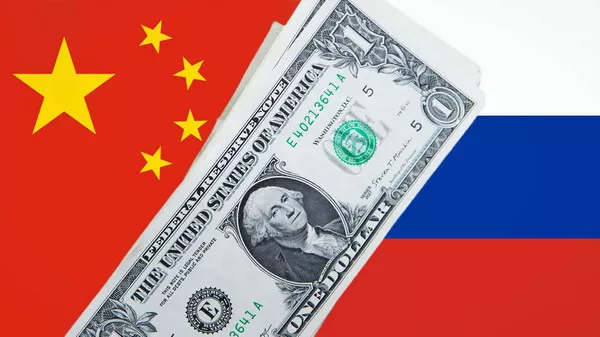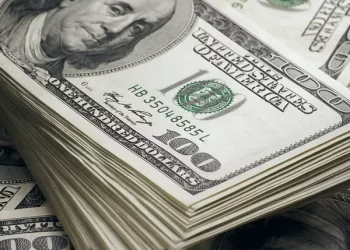On the morning of May 17, the offshore renminbi fell against the U.S. dollar and fell to 7.0101 in the intraday session. This is the first time since December 29, 2022 that the offshore renminbi-dollar exchange rate has broken through the integer mark of “7”.
In the onshore market, the RMB exchange rate also fell. After the spot exchange rate of RMB against the US dollar opened at 6.9860 on May 17, it fell below the 6.99 mark, approaching the “7” mark.
Entering 2023, the exchange rate of the RMB against the US dollar rose first and then fell. In January, it regained the 6.70 mark and then fell back in shock. Since the beginning of this year, the central parity rate of the RMB against the US dollar has depreciated by 0.15%. The exchange rate depreciated by more than 1.2%.
Why the RMB exchange rate against the US dollar fell
Wang Qing, chief macro analyst of Oriental Jincheng, pointed out that the offshore RMB fell below the “7” mark, which was mainly affected by two factors. The statement has driven the recent rebound in the U.S. dollar index; under the price comparison effect, the RMB will depreciate to a certain extent against the U.S. dollar. More importantly, since the beginning of the year, the domestic settlement rate has been generally low and the sales rate has been relatively high. This means that the high trade surplus is more converted into domestic dollar deposits instead of being converted into RMB, which will also affect the balance of supply and demand in the foreign exchange market and push the RMB to depreciate against the US dollar. Finally, the recently released macro data shows that the domestic economic recovery process has experienced certain twists and turns, which may also have a certain impact on the sentiment of the foreign exchange market.
“We judge that the above factors are likely to ferment in the short term, and the trend of the RMB ‘breaking 7’ may continue for a period of time.”
“Last week, the U.S. dollar rose, and economic data in April showed that the recovery was slowing down, and the renminbi fell against the U.S. dollar. The reason for the recent rise in the U.S. dollar index was mainly due to the rise in risk aversion. The U.S. debt ceiling negotiations did not break through. The consumer confidence index has also dropped to a low level, and the market is worried that the U.S. economic recession has intensified.” A foreign exchange trader at a large state-owned bank said.
Industrial Research pointed out that the U.S. dollar index is supported by fundamentals and strengthened, boosted by the purchase of foreign exchange for dividends and tourism in the middle of the year, and the U.S. dollar has entered a rebound band against the renminbi. It is recommended to seize the foreign exchange settlement window.
According to data released by the State Administration of Foreign Exchange this week, the service trade cross-border balance of payments deficit was US$6.3 billion in April, and residents’ cross-border travel spending recovered in an orderly manner, although it was still lower than the pre-epidemic level.
How will the market outlook go
Although the RMB fell below the “7” mark against the US dollar, the market is not pessimistic about the next trend.
UBS Securities pointed out in the latest report that despite the slight depreciation of the yuan against the US dollar, more upside is expected in the future.
“Looking forward, we maintain our forecast that the USD/CNY exchange rate will reach 6.8 by the end of the year. As the Chinese economy will continue to recover and the Fed may end its rate hike cycle in the next few months, we expect the RMB to accelerate its appreciation against the USD in the second half of the year. “UBS Securities pointed out.
Wang Qing pointed out that in the past five years, the RMB exchange rate against the U.S. dollar has broken through “7” three times and then returned below “7”, and the flexibility of two-way fluctuations has increased significantly. This means that the sensitivity of the 7.0 point has been diluted, that is, falling below 7.0 does not mean that the continued sharp depreciation will continue; rising above 7.0 does not indicate that the RMB will continue to appreciate sharply.
“Looking forward, as the Fed’s current round of interest rate hikes is coming to an end, and under the influence of the banking crisis, the downward pressure on the U.S. economy will further increase. It is unlikely that the U.S. dollar index will continue to rise in the later period. In addition, the current domestic U.S. dollar deposit interest rate Entering the top range, the probability of further rise is very small; and with the continuous recovery of the domestic economy, the recovery of various market interest rates including the RMB deposit rate is a general trend. From this point of view, the current settlement rate is low and the sales rate is high. It is difficult to continue, and the trend of the RMB exchange rate will return to the fundamentals in the later period. With the overseas economic downturn this year and the prospect of the domestic economy continuing to recover, there is no room for a large depreciation of the RMB.” Wang Qing said.


























